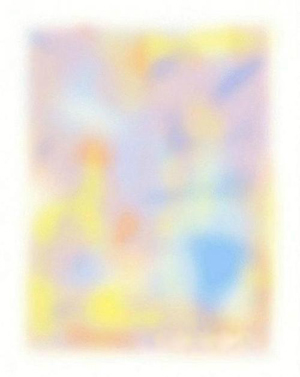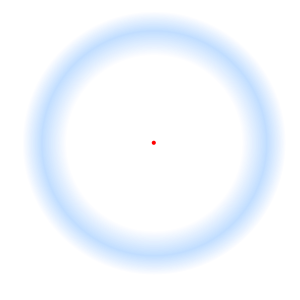 Here and then I feel like having a burden of “responsibility”, where I remind myself it would be irresponsible if I didn’t al least provide occasional education, specially when there are so many young-ones among us, whose minds are still forming and thirsty for knowledge! Before I explain the science behind this interesting phenomenon called Troxler’s Effect, let me show you an example you can experience yourself! Look at the blurry image on your right. Now stare at the center of the image, and at the same time try not to blink. After a moment or two, image will disappear, thus showing you how this article would look like if there was no image attached to it!
Here and then I feel like having a burden of “responsibility”, where I remind myself it would be irresponsible if I didn’t al least provide occasional education, specially when there are so many young-ones among us, whose minds are still forming and thirsty for knowledge! Before I explain the science behind this interesting phenomenon called Troxler’s Effect, let me show you an example you can experience yourself! Look at the blurry image on your right. Now stare at the center of the image, and at the same time try not to blink. After a moment or two, image will disappear, thus showing you how this article would look like if there was no image attached to it!
Now let’s try and explain the science behind this: Troxler’s Fading or Troxler’s Effect is a phenomenon of visual perception you have just experienced moments ago. When one fixates a particular point, after about 20 seconds or so, a stimulus away from the fixation point (in peripheral vision) will fade away and disappear. The effect is enhanced if the stimulus is small, of low contrast, or blurred. It works best the further the stimulus is away from the fixation point.
Troxler’s fading was first discovered by Ignaz Paul Vital Troxler, back in 1804. It is part of the general principle in sensory systems that an unvarying stimulus soon disappears from our awareness. Here’s a fun experiment you can try yourself: place a small piece of paper on the inside of your forearm. You can feel it for a few seconds, but then the sensation is no longer present. This is because the tactile neurons have adapted. Now, if you jiggle your arm up and down, giving varying stimulation, you will continue to feel the paper until it falls off! Similar fading can be seen of a fixated stimulus when its retinal image is made stationary on the retina, a stabilized retinal image. One can induce an afterimage, usually by an intense, brief flash, such as when one is photographed using a photographic flash. 
This causes an image to be bleached onto the retina by the strong adaptation of the rods and cones. In all these cases, the stimulus fades away after a short time and disappears. Troxler’s fading can occur without any extraordinary stabilization of the retinal image in peripheral vision because the neurons in the visual system beyond the rods and cones have large receptive fields. This means that the small, involuntary eye movements made when fixating something fail to move the stimulus onto a new cell’s receptive field, giving unvarying stimulation. One of the more famous examples we covered in the past was Lilac Chaser. Be sure to check Disappearing Effect category for many more examples of Troxler’s Effect!
the orange spots stick around but for the most part it disappears.
yeah, I found that the blue rind around the dot disappeared better than the first picture.
Yeah same with me the orange stayed but then if you close your one eye and do it again it should work better
You’re probably not concentrating on it long enough. Eventually the orange dots will disappear.
this is a classic ….
awesome! – never seen this kind before
worked in like 6 seconds – but yeah the orange didnt disappear entirely
classic but still so cool
Just thought of a really cool experiment:
What happens if you take Lilac Chaser, but that start with a green dot running in circles and slowly fade to the purple dots.
So start with the after image, and then slowly build to the original illusion.
I think people will try to keep on seeing the green dot they saw, and they will succeed without seeing the purple dots later on.
Fantastic!!!!
Ow! Does that make anyone else’s eyes hurt? Mine sting as soon as the illusion starts working, but I stuck with it and saw it! Awesome! That’s a great illusion… and ow.
closing one eye helps
Owy ow ow ow! well anyways, i have bad hurting eyes! anyways it works. :D
Not working on my eyes at all… but it might be because I have nystagmus + a form of albinism.
V-SAUCE
Omg I was staring and my screen turned off it made me jump a mile and it took me a full five seconds to figure out that wasn’t the illusion
@Rachelanne Yow, that’s funny, right there. Sometimes reality plays the biggest tricks of all!
I think the first image is a blurry THE SIMPSONS image.
SO COOL!!!!!
They both gone after 10 seconds! Great!
Hmm… Neither of these illusions worked for me. Of course, when I took my glasses off, EVERYTHING disappeared! Ha ha.
This is really interesting though. I’ll show this to my psychology teacher, maybe he’ll include it in the “perception” unit next year.
Huh… so by this theory, long distance driving just became pretty damn dangerous..